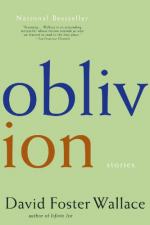|
This section contains 690 words (approx. 2 pages at 400 words per page) |

|
Point of View
The story is written in the first person and the past tense, as the narrator recalls the events of the central narrative from years in the future. Thus, the narrative is essentially bifurcated between the narrator’s present-day perspective and the narrator’s perspective at the time of the incident in question. However, the narrator’s present-day perspective must, in certain ways, mediate the narrator’s past perspective, as the narrator has developed new thoughts about the day in question and has acquired new information. The narrator’s present-day perspective therefore functions to retroactively process and recontextualize the traumatic experience of the day in question. This trauma is then presented to the reader in the context of the story’s larger thematic concerns.
Although the narrator’s past perspective is mediated through his present-day perspective, it is important to explore the particularities of his childhood...
|
This section contains 690 words (approx. 2 pages at 400 words per page) |

|




